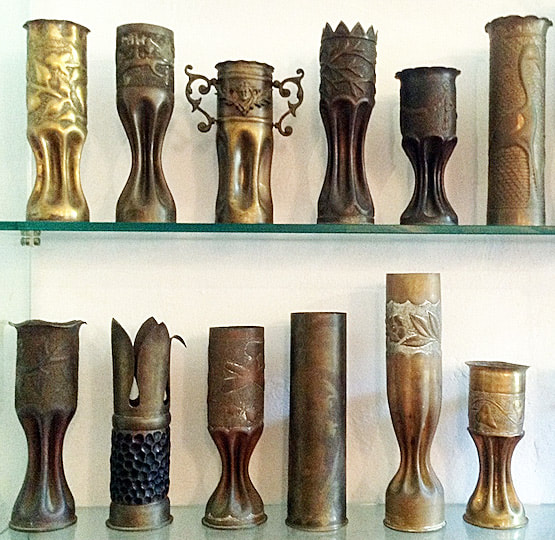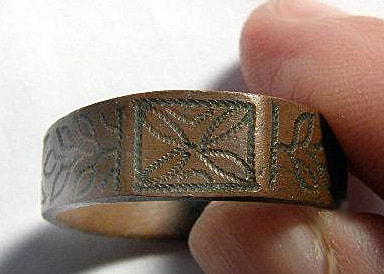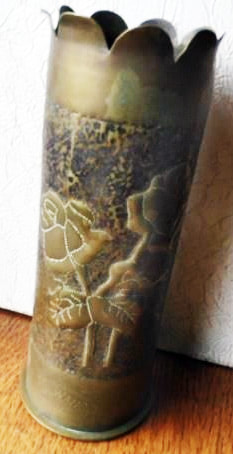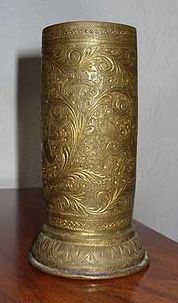 Artillery shells -an abundant source for trench art Artillery shells -an abundant source for trench art The Great War, as it is called, was a dramatic shift in the way war was waged... with the introduction of tanks, churning up the land as they mowed down anything, and anyone--in their way. Both tanks and cannons pulled on carts meant there would be shells remaining... countless numbers of them seemed to become part of the landscape of war, along with the barbed wire and trenches filled with men and vermin. Italian soldiers were often stuck in the trenches for extended periods, and somehow, from an urge to ease the boredom or simply forget about the horror and fear, they used the jetsam of the battlefield to create trench art.  Shell art (not the seashell type) is one of the most famous types produced in wartime. Soldiers hammered intricate designs into the casings of artillery shells. Smaller ones were decorated and carried in pockets, often made into cigarette lighters. The larger were turned into vases, bowls, ash trays, or cachepots and taken home after the war was over. The soldiers would use whatever tools they had available, creating a range of designs, often dating and naming the battles and victories they took part in, or simply adorned with flowers to please a loved one waiting back at home. When you look at the beautiful designs on these pieces, it's a wonder that these men crafted them while the world around them was in chaos. --Jerry Finzi  Evangelista Torricelli was born Oct. 15, 1608 in Faenza, Romagna. He was an Italian physicist and mathematician who invented the barometer, a device that measures atmospheric pressure, commonly used in forecasting changes in the weather. The catalyst for inventing the barometer was spurred on my a suggestion by Galileo that Torricelli use mercury in place of water for his vacuum experiments. After reading his papers in 1641, Galileo invited Torricelli to Florence, where he became the aging astronomer's secretary and assistant during the last three months of Galileo’s life. After Galileo's death, Torricelli was appointed as his successor as professor of mathematics at the Florentine Academy. Two years later, pursuing the suggestion by Galileo, he filled a glass tube 4 feet (1.2 m) long with mercury and inverted the tube into a dish. He observed that some of the mercury did not flow out and that the space above the mercury in the tube was a vacuum. Torricelli became the first man to create a sustained vacuum. His observations proved that the variation of the height of the mercury from day to day was caused by changes in atmospheric pressure. He never published his findings, however, because he was too deeply involved in the study of pure mathematics. Since atmospheric pressure also changes with altitude, Torricelli's barometer also could be used as an altimeter. Torricelli died Oct. 25, 1647 in Florence at a mere 39 years old. As a further honor, Torricelli had both a crater on the moon and a submarine named after him... Play the video to see how Torricelli's experiment worked.
|
On Amazon:
|

















 RSS Feed
RSS Feed
